It's easy to think that the Porsche Cayenne was a bit of a mongrel when it first came out; a bit of a mistake.
At the time, it copped a scolding for its heavy-handed styling. And despite being the best SUV for drivers up to that point, those blasted car critics gave it a hiding.
It's easy to think back to those reviews, those grainy episodes of Top Gear, and think that Porsche's first foray into SUV production was a failure.
But, you'd be very wrong. The Cayenne sold well, and then simply got better and better with age. Nowadays, few 'Porsche purists' would bat an eyelid seeing one at the traffic lights.
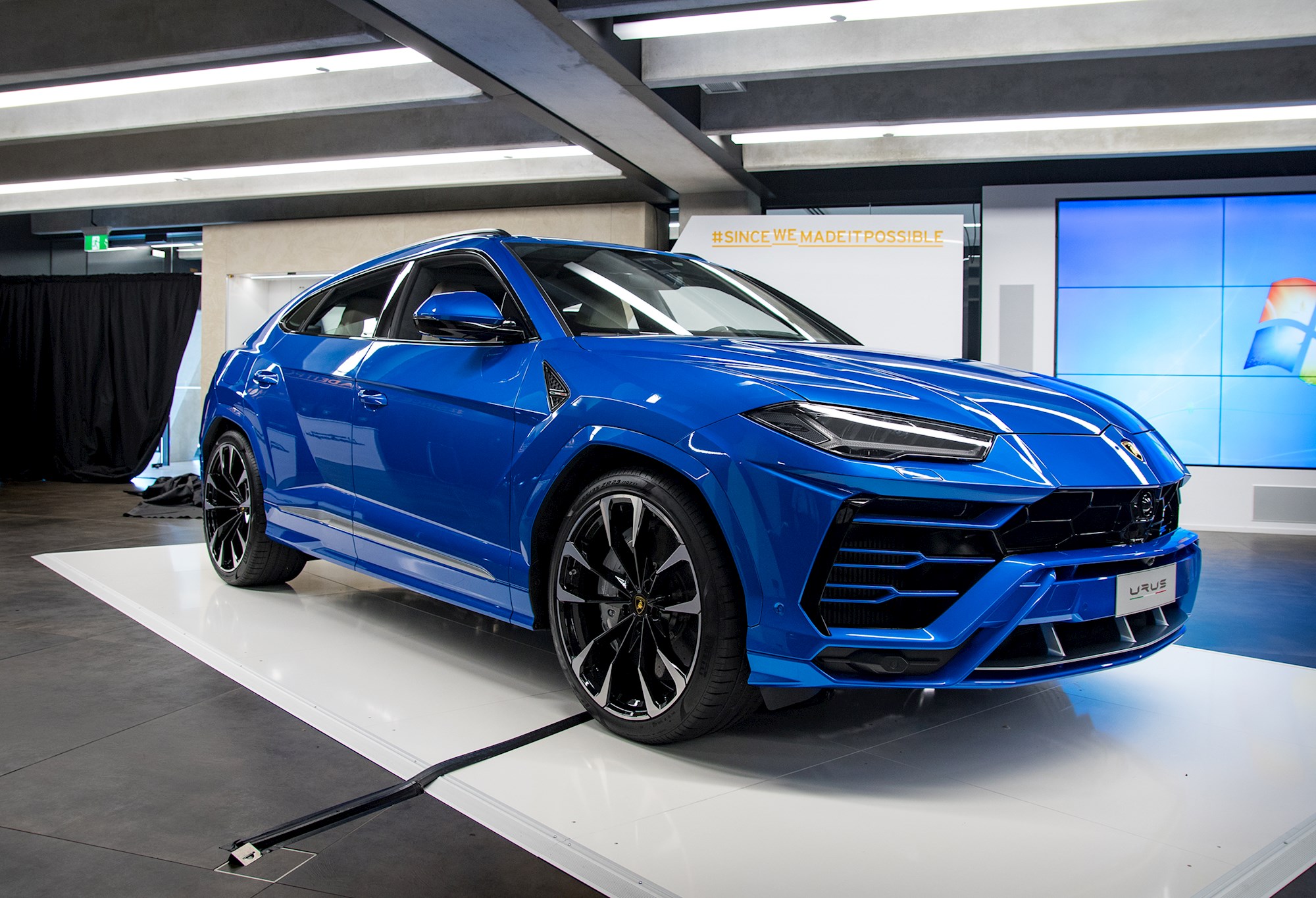
As a machine it's helped pave the way for a raft of other manufacturers to take the plunge, with Lamborghini now joining the segment with the Urus (yes, this isn't their first SUV. But the LM002 was something completely different).
For the moment, there's only one of these in New Zealand. It's a left-hand drive pre-production model depicted in 'Blu Eleos'. Eleos is a Greek god known for compassion and mercy, while Blu is ... the Italian word for blue.
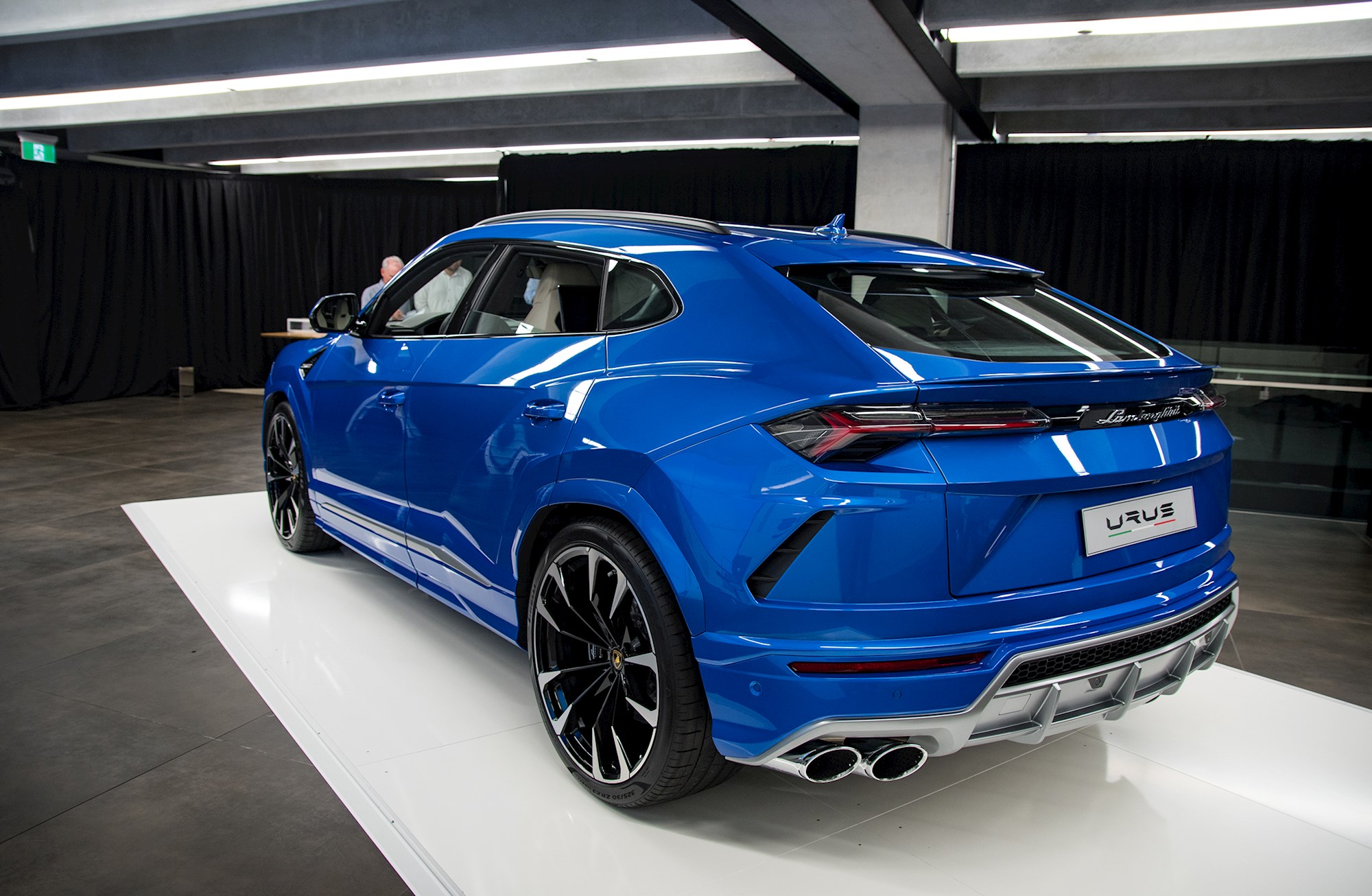
This particular Urus is currently sitting at Grey Lynn's Giltrap Group. It's currently under wraps, but tomorrow morning the covers are coming off and everyone's invited. There's food and drink too, not to mention a supporting cast of supercars on display from Lamborghini as well as Aston Martin, Bentley, and co.
Driven, along with some other journos, got a little sneak peek yesterday. And before we get into numbers and figures, let's drink in the exterior of this big Italian brute.
Photos don't do the Urus justice. They fail to highlight how menacing and chiseled it is. From the deep contours that spread up the bonnet, to the busy folds that help sculpt its sides. A coupe-like rear end and pillar-less doors further distance it from others in the class, too.
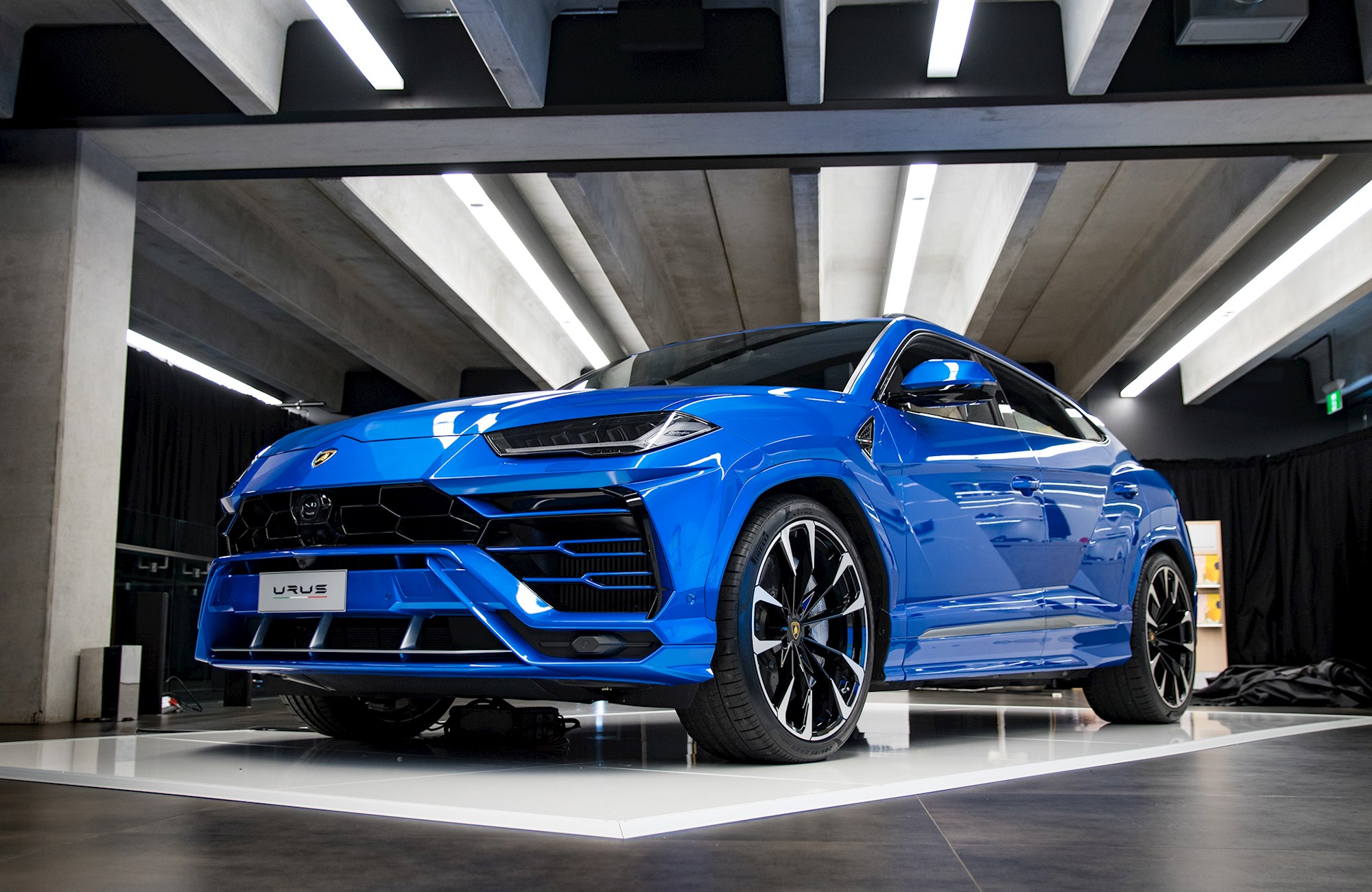
One thing I noted was how different the Urus looks from certain angles. From a photo taken low to the ground like this one, it looks a bit like a blob. It loses a lot of its shape, particularly its sloping rear silhouette.
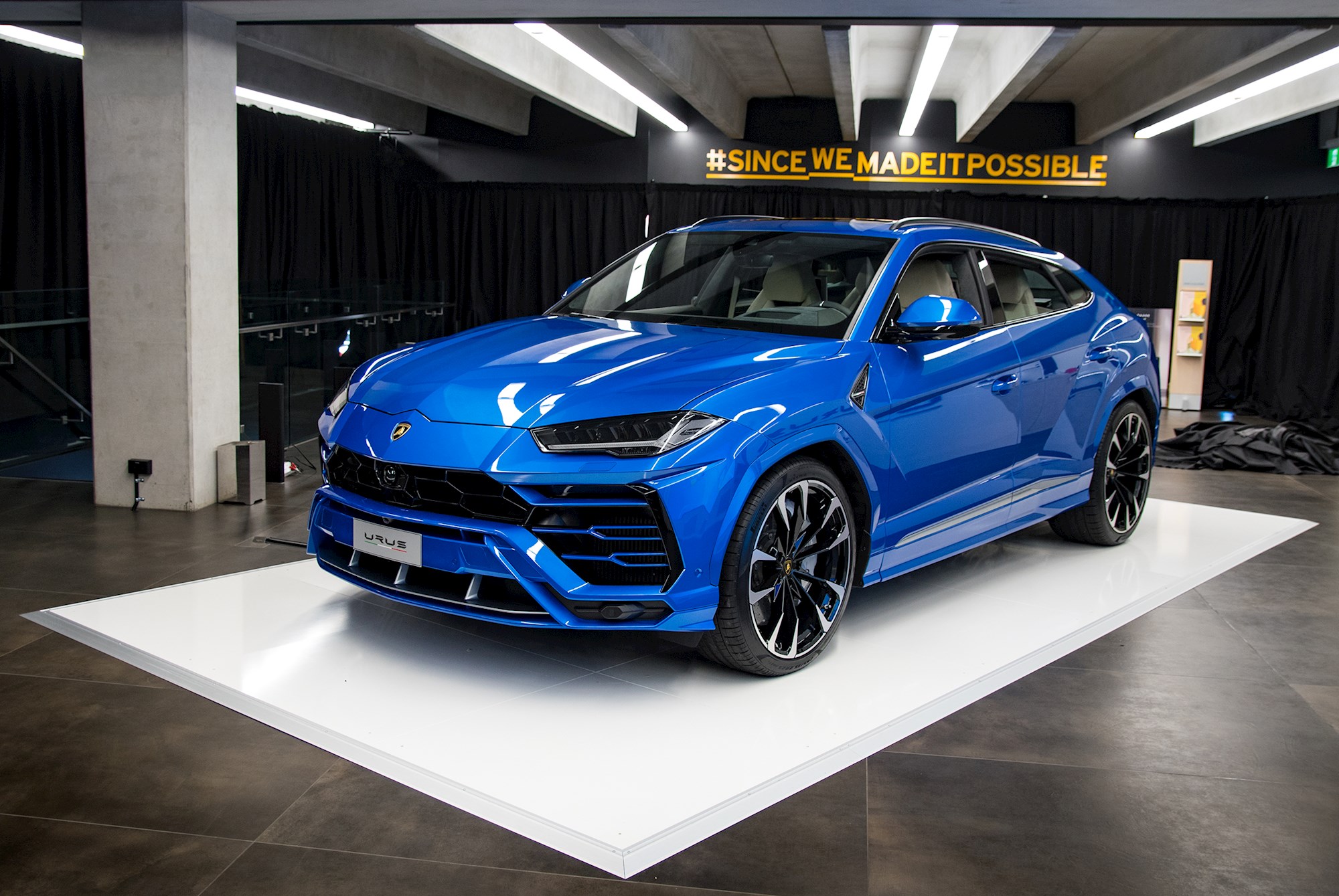
However, when shot from eye level that shape is regained, and it looks more intricate.
From side on, the most notable element is the boxed rear guard, that helps he Urus achieve a wide rear track. The extra rump seeps around the rear of the SUV, as a pair of rear vents break up the drama.
There are logos everywhere. The headlights and taillights come with Urus insignias, and the faux fender vents support a pint-sized Italian flag. Combined with the Lamborghini logos front and rear, and each logo on the wheels and brake callipers, and the Urus has 16 of them in total on the outside.
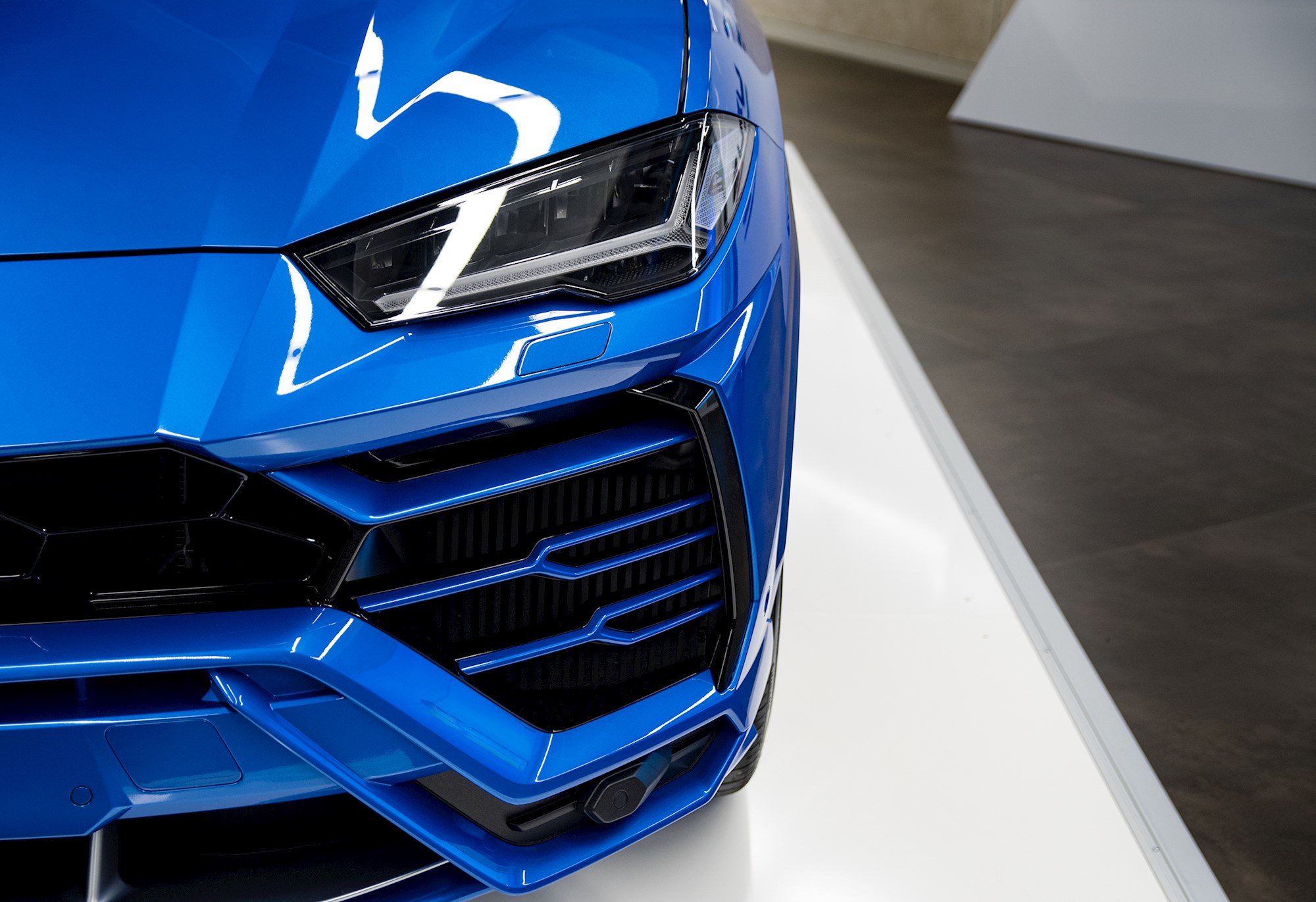
Speaking of vents, the front of the Urus is utterly loaded with them. There's the dominant primary grill, and that's backed up by more apertures underneath and to the left and the right. And they're all functional, with at least four radiators that we could see playing peekaboo behind the mesh.
The mesh brings us to one of the Lambo's big design features that's very consistent throughout the car; hexagons. The more you look, the more of them that you'll find inside and out.
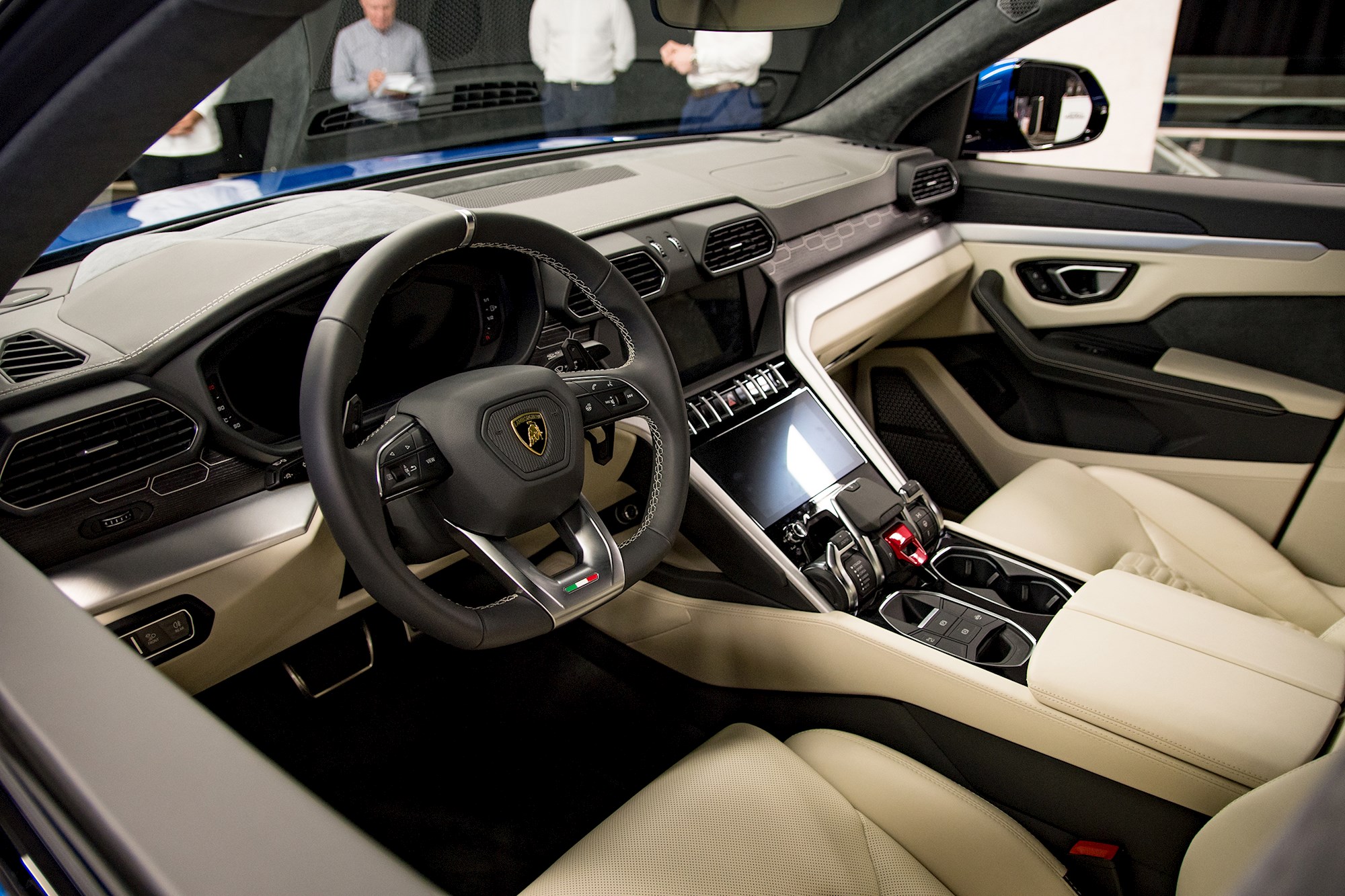
The goal with much of the Urus' design language is for it to feel every bit as much of a Lamborghini as a Huracan or an Aventador. This explains the creases and hexagons, but truly shines when you open the doors and hop inside.
Up front are a bunch of tropes that you'd expect in an SUV from this class. There's a digital cluster, lovely leather, heated and ventillated massage seats, and a good amount of legroom front and rear.
But, the press pack defines the interior as 'unmistakable Lamborghini', and it's very hard to argue.
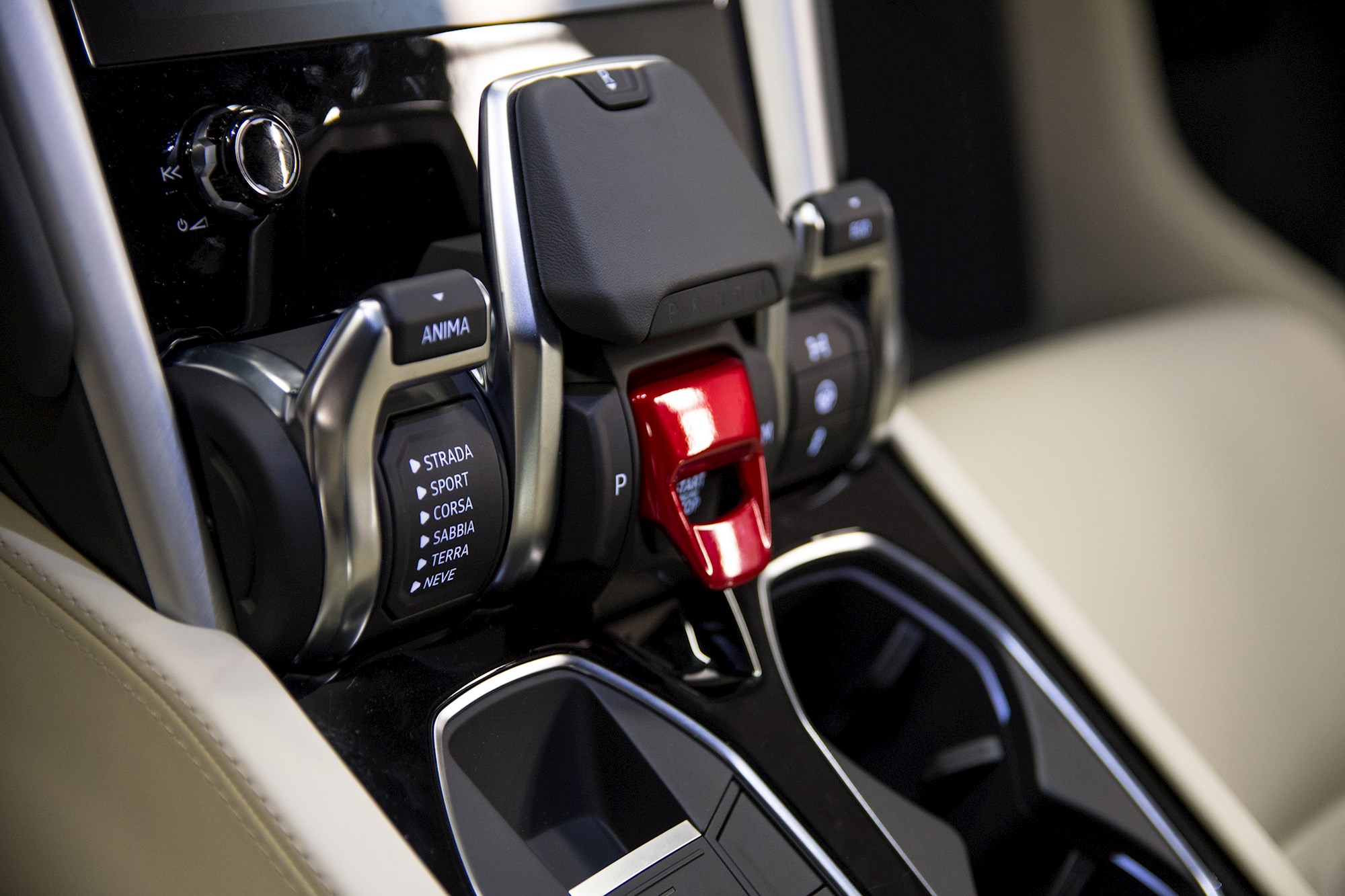
This is underlined best by the presence of what Lamborghini call a Tamburo (this translates to 'drum' in Italian). It's the control panel set-up that sits at the base of the center console. The main center lever is how drivers navigate the automatic transmission.
Meaty levers on the flanks help drivers customise their driving mode and, Lamborghini being Lamborghini of course, the mode names all differ from the norm (save for the ever faithful 'Sport', of course).
And in the middle is the ubiquitous Lamborghini start button, hiding underneath a red safety panel for ultimate showmanship.
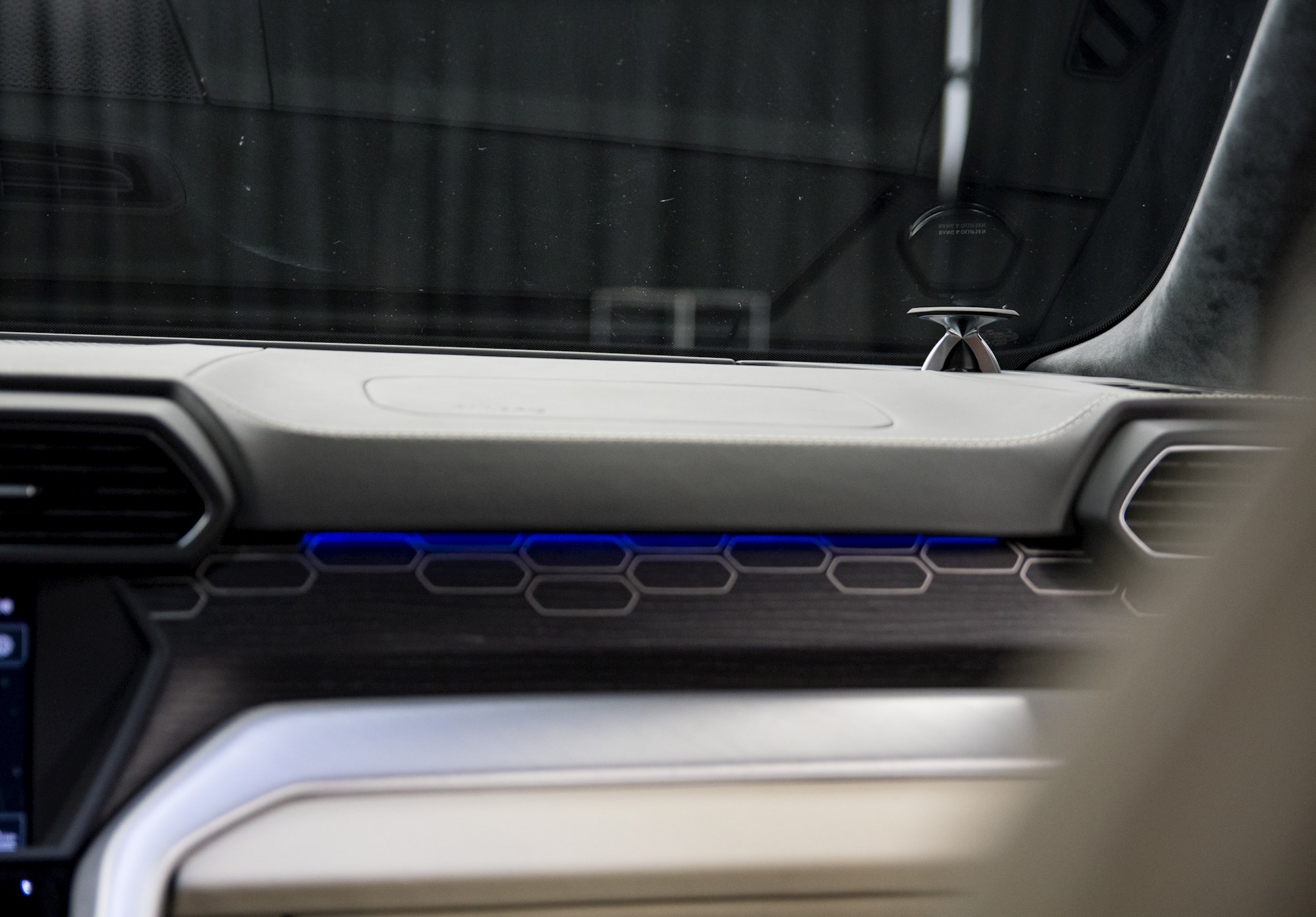
But it's as much about the technology as it is design inside the Urus. Dual 13-inch TFT screens are among the most intelligent in class, with the lower screen capable of understanding hand-writting commands. This makes it a tantalising prospect for keying in satnav destinations while on the run.
The Bang & Olufsen sound system is also a treat. A pair of cute little tweeters rise electronically out of the dashboard, and the sound that results is as detailed and dimensional as anything else on the market.
We haven't got into the back seats yet, either.
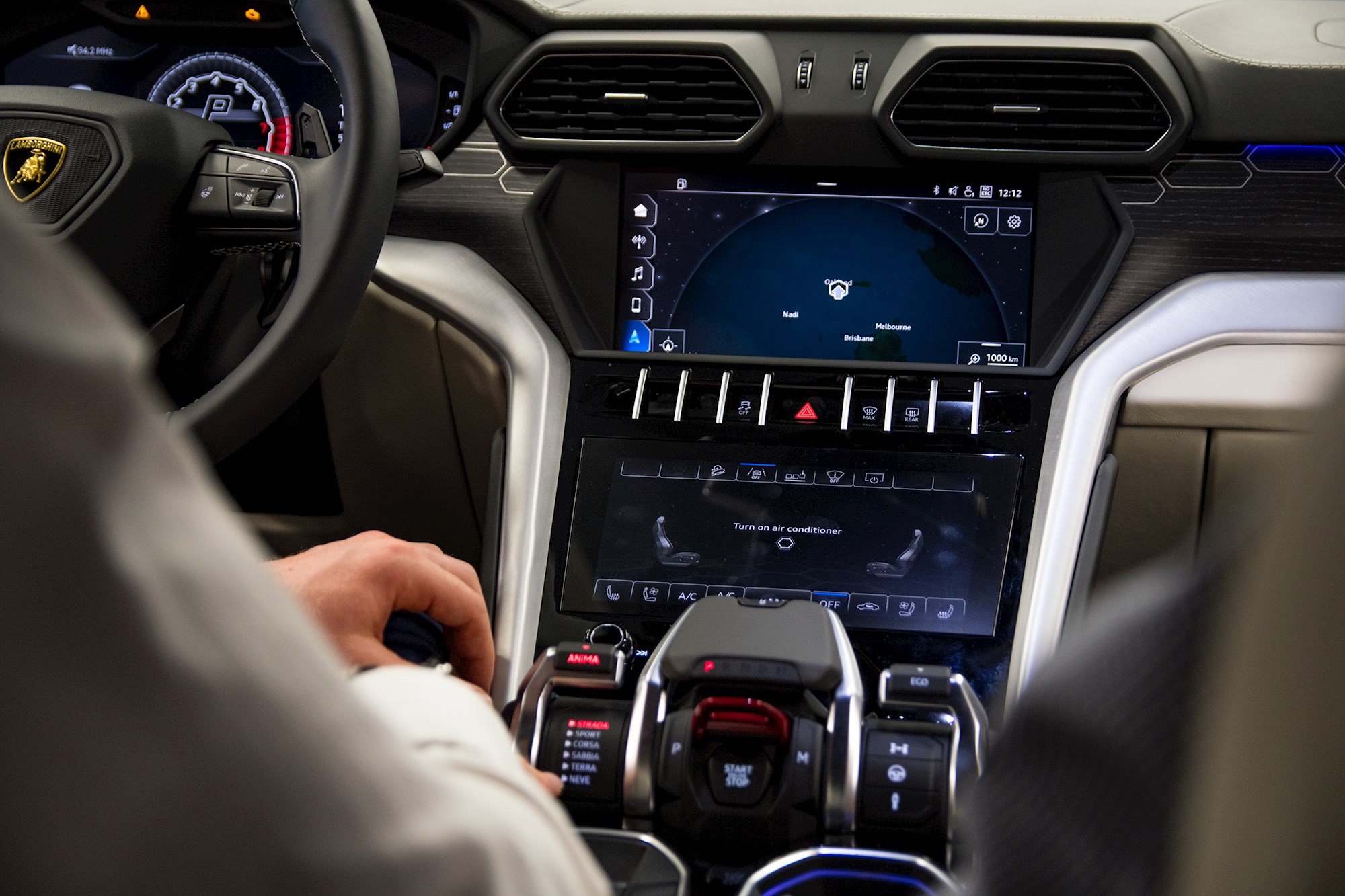
Base models (such an odd term to pair with this car...) will come with five seats. But this pre-production model is outfitted with an optional luxury rear format, which skips the fifth seat and instead replaces it with a neatly integrated centre console.
Rear passengers also get their own climate control screen (making it four screens in the Urus total), as well as optional rear screens that clip into the front head rests. Fully outfitted, that's six screens in one car.
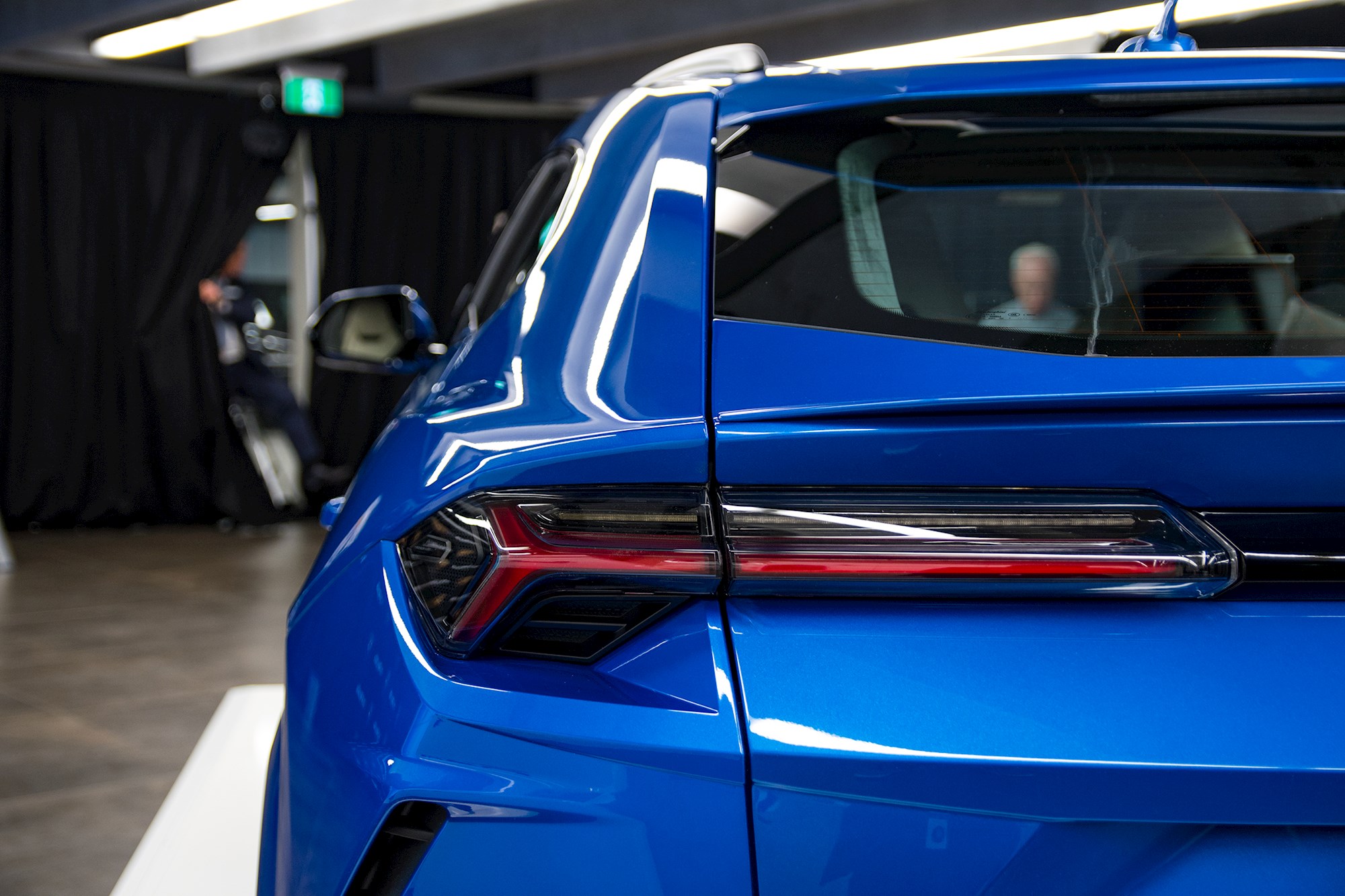
And yeah, there's hexagons absolutely everywhere. Between the rear seats, on the dashboard, moulded into the shapes of the steering wheel centre, the aircon vents, the apertures for seat belts ... everywhere. Note the prolific Y-shaped fixtures too, in the taillights and speakers among other places.
Downsides? Few and far between generally. It is a bit eye-brow raising to see that, given all the pomp and occasion inside and the focus on design on the outside, that they've fitted the doors with some generic plastic handles.
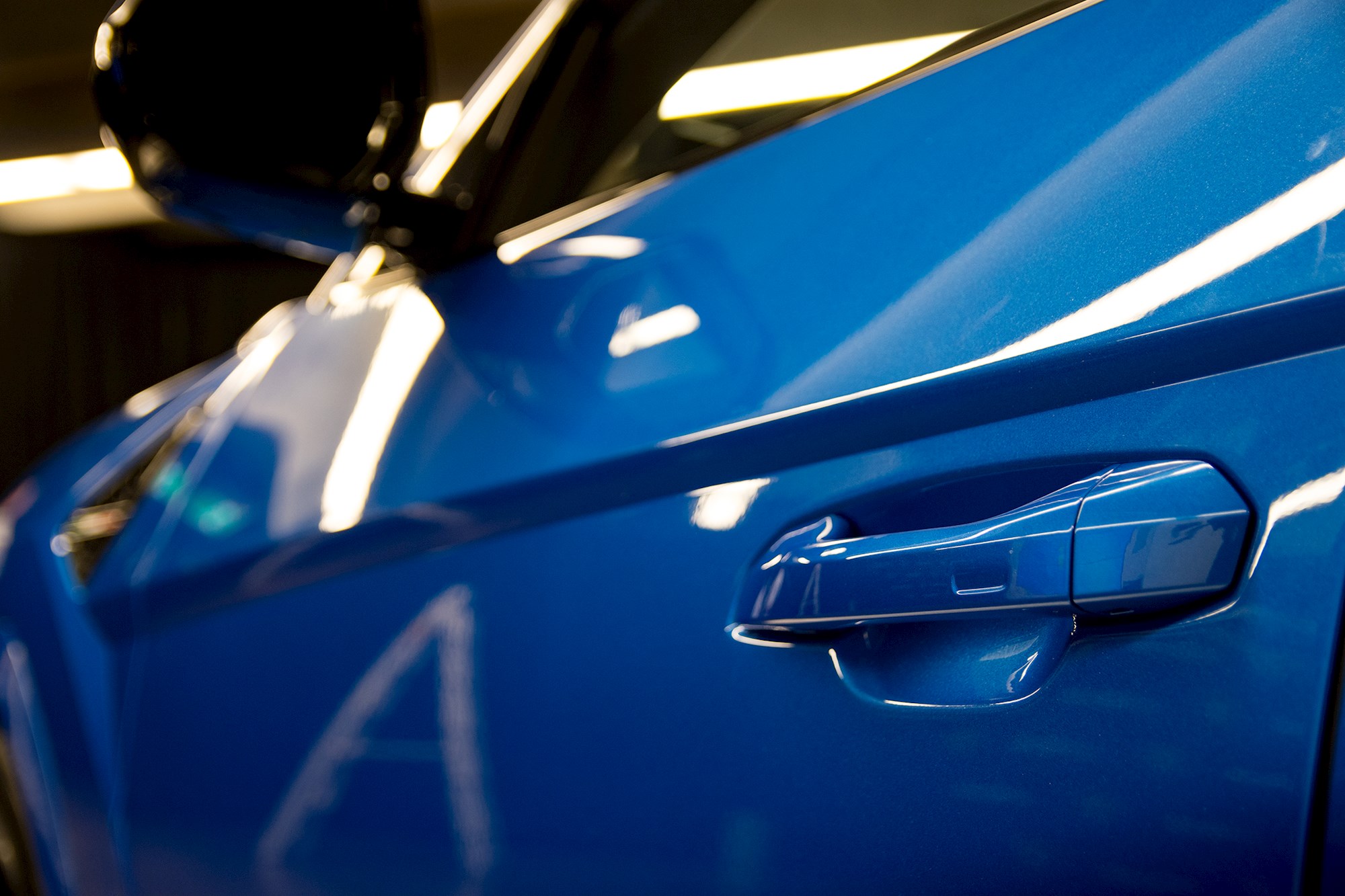
Now, numbers.
These have been well touched on, but revisiting them can't hurt. The Urus is powered by a 4.0-litre twin-turbo V8 that's capable of stirring 478kW of power and 850Nm of torque. 100km/h comes up on that digital gauge in 3.6 seconds, and on a long enough bit of road (or track, because doing it on the road would be illegal...) you'll strike 305km/h.
Lamborghini say it's the fastest SUV ever, and should those numbers hold up they're right. In the race to 100km/h, it is effectively equal with the current champion — the Jeep Grand Cherokee Trackhawk. But in top speed it's king; clocking a figure 16km/h quicker than the American.
But there's one performance element that might be even better than the straight-line stuff. And that's the brakes.
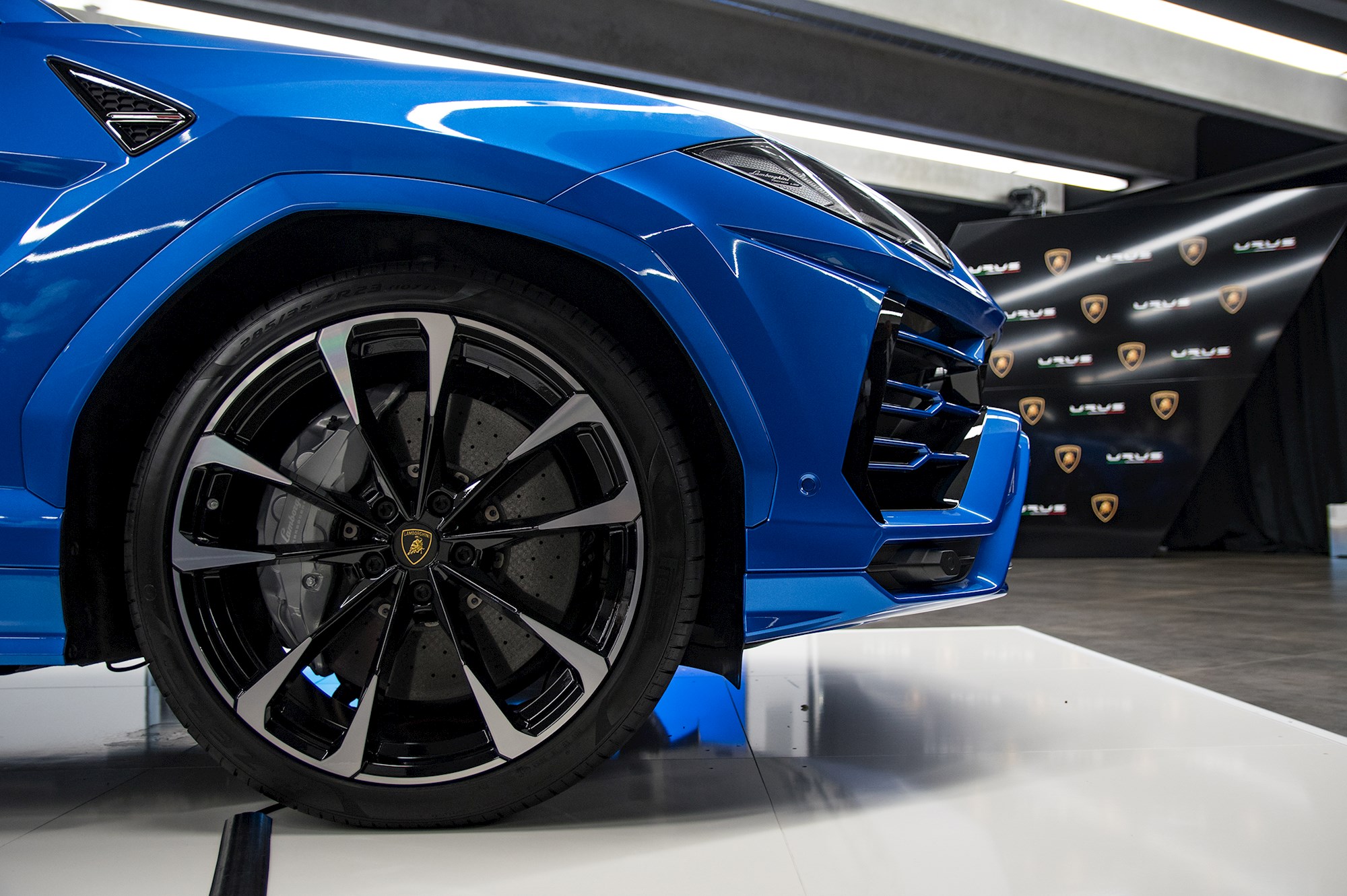
The Urus comes with eye-watering 17-inch carbon-ceramic brake discs up front, paired with absurdly enormous 10-piston callipers (smaller discs and six-piston callipers are fitted in the rear). They are the biggest discs fitted to any production car ever made, and exist as objective proof that Lamborghini went all out to make the Urus a proper performance vehicle.
There's much more to see and learn about the Urus of course. Only so much can be guaged by staring at it, so for now you can take a look at our huge gallery of images below (or schedule a trip to Giltrap tomorrow).
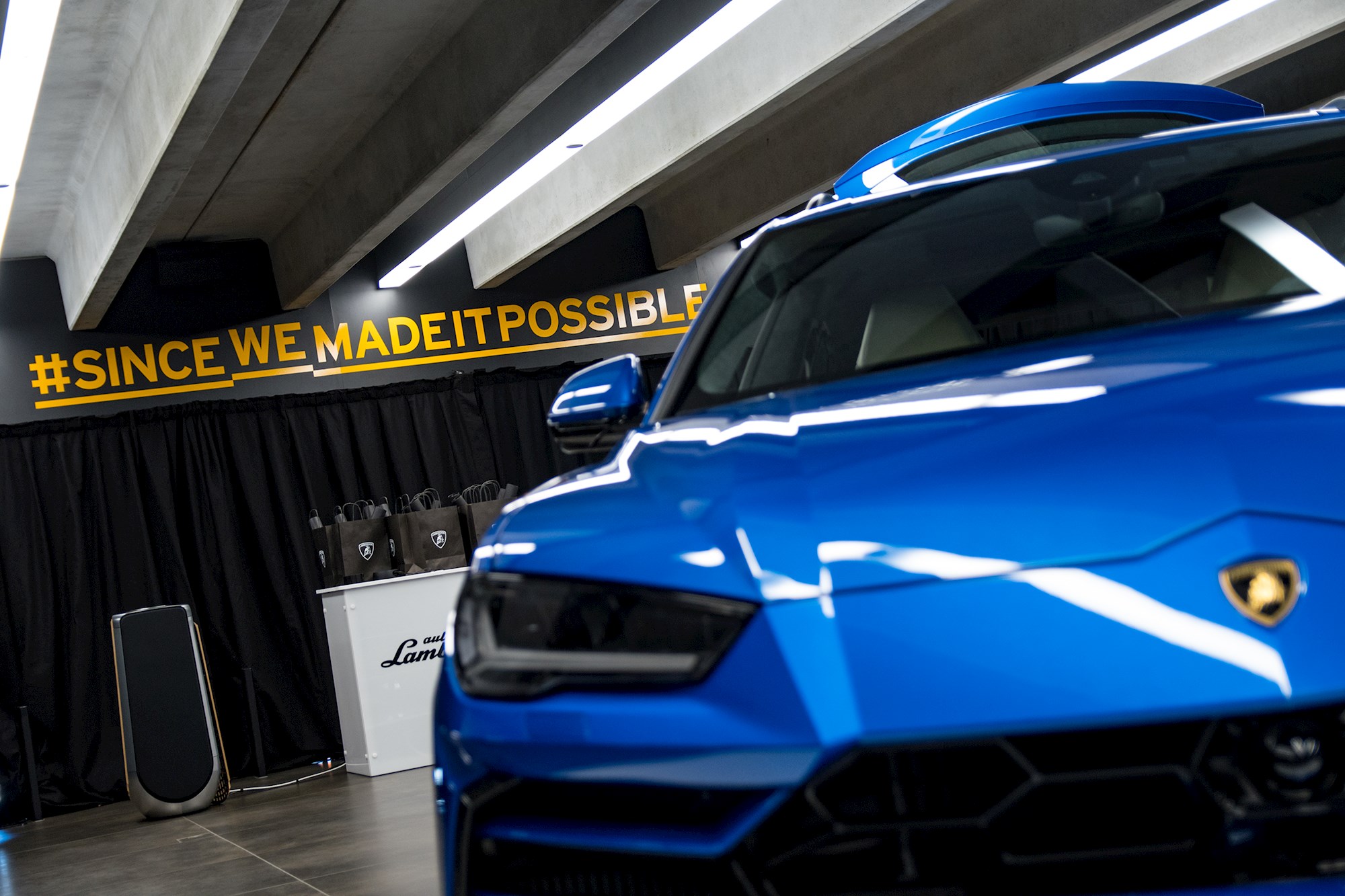
They're expected to arrive by August, with sales numbers so far still kept under wraps. Pricing begins at $339,000, making it the cheapest Lamborghini ever made.
One of the best, too? Maybe. One of the most ambitious? Almost certainly.

















































